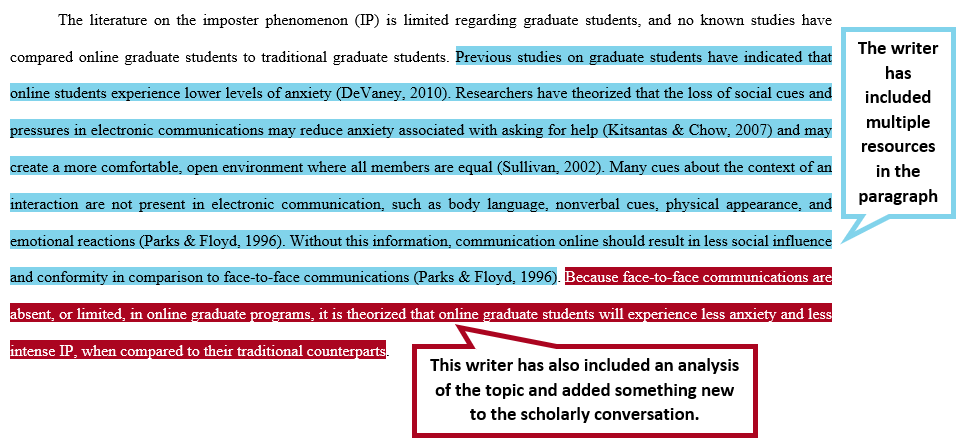What is synthesis?
At the very basic level, synthesis refers to combining multiple sources and ideas. As a writer, you will use information from several sources to create new ideas based on your analysis of what you have read.
How is synthesis different from summarizing?
When asked to synthesize sources and research, many writers start to summarize individual sources. However, this is not the same as synthesis. In a summary, you share the key points from an individual source and then move on and summarize another source. In synthesis, you need to combine the information from those multiple sources and add your own analysis of the literature. This means that each of your paragraphs will include multiple sources and citations, as well as your own ideas and voice.
Why do I need to include synthesis?
At the upper-division and graduate level, you are entering the scholarly conversation on advanced topics in your field of study. Because of this, you need to show that you understand and can integrate research on these topics in a unique way that adds to the conversation. By synthesizing research, you are showing that you can combine current information in your field of study and add a new interpretation or analysis of those sources.
What steps do I need to take to reach synthesis?
To effectively synthesize the literature, you must first critically read the research on your topic. Then, you need to think about how all of the ideas and findings are connected. One great way to think about synthesis is to think about the authors of the research discussing the topic at a research conference. They would not individually share summaries of their research; rather, the conversation would be dynamic as they shared similarities and differences in their findings. As you write your paragraphs, focus on a back and forth conversation between the researchers.
What strategies can I use to synthesize my information?
The key to a good synthesis is to be organized as you’re researching and reading sources on your topic. One way to organize your research is to use a synthesis matrix. In this synthesis matrix chart, you can record your sources and main ideas on the topic. When finished, it will provide a visual representation of your research and help you to see how sources are connected.
In addition to a matrix, as you critically read your sources, take note of the following:
- Do any authors disagree with another author?
- Does one author extend the research of another author?
- Are the authors all in agreement?
- Does any author raise new questions or ideas about the topic?
Example of Synthesis

